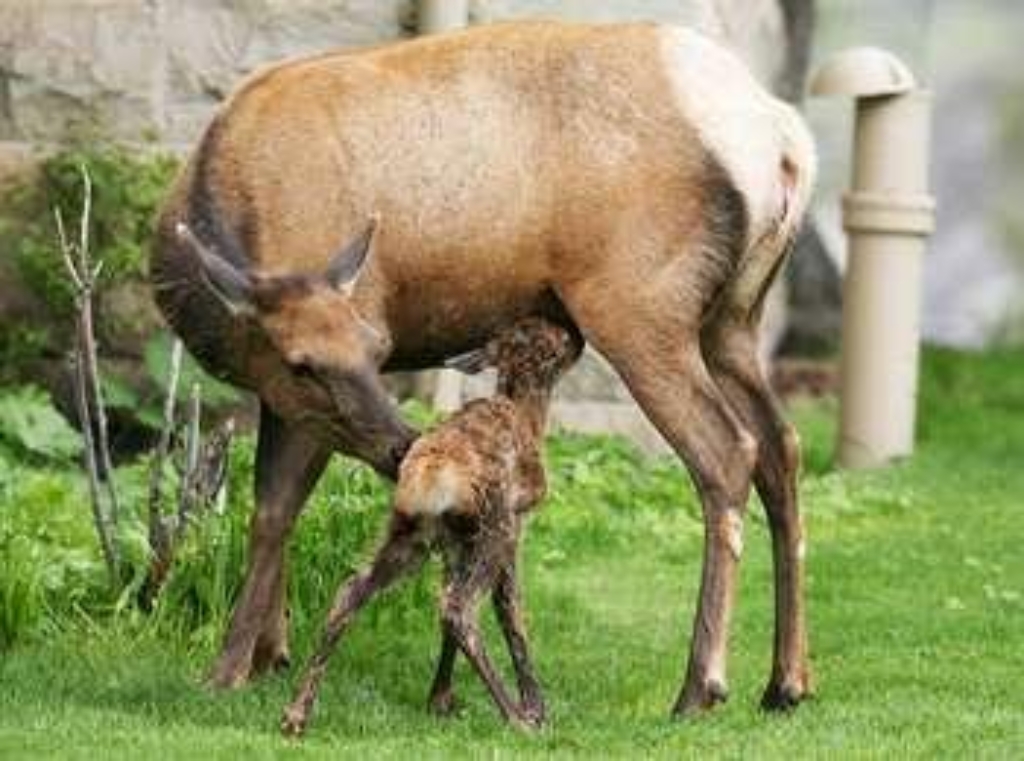
Elk live here all year, and are wild and unpredictable. Each year visitors are chased, trapped, and sometimes injured by elk.
Elk are the most abundant large mammal found in Yellowstone. Yellowstone’s largest elk herd winters along and north of the park boundary. Elk often feed on the historic lawns of Mammoth Hot Springs, which have been irrigated since they were planted by the US Cavalry in 1902. This area is the Parade Ground.
Bulls have antlers, which begin growing in the spring and usually drop in March or April of the next year. They use their antlers for protection.
Elk teeth have annual growth rings, just like a tree.
Elk, Wapiti, or Red Deer?
European American settlers used the word “elk,” which is the word used in Europe for moose. The North American elk is the same species as the red deer of Europe.
The Shawnee word “wapiti” is another name for elk. It means “white deer” or “white-rumped deer.”
Antlers or Horns?
Antlers grow as an extension of the skull. They are true bone and are generally found only on males of the deer family. Antlers are shed and regrown each year.
Horns are made of two parts: bone extending from the skull covered by a sheath similar to fingernails. Horns are found on pronghorn, bighorn sheep, and bison. Horns continue to grow throughout an animal’s life. One exception is the pronghorn, which sheds and regrows its horn sheath each year.
Animals are Dangerous
- Do not approach or feed any animal.
- Bison and elk have injured people.
- Stay 100 yards (91 m) from bears and wolves.
- Stay 25 yards (23 m) from all other animals.
You are responsible for your safety.
Think Safety, Act Safely. Yellowstone is a Dangerous Place.
Is there something we missed for this itinerary?
Itineraries across USA


















































